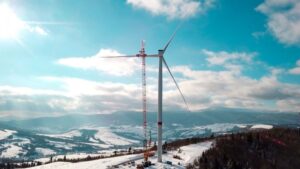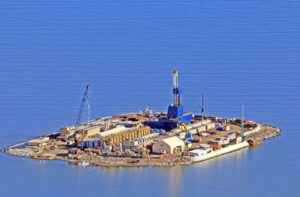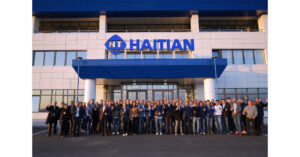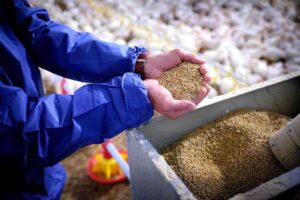
Ukrainians’ spending abroad, which is recorded under the item “travel imports,” will decrease by approximately 10% in 2025 compared to last year and will amount to about $12 billion, according to the forecast of Serhiy Nikolaychuk, First Deputy Governor of the National Bank of Ukraine (NBU).
“In 2023, Ukrainians’ spending abroad reached its peak – about $20 billion. After that, we are seeing a gradual decline: quite sharp in 2024, and this year we expect another decline of about 10%,” he said in a podcast by the Center for Economic Strategy.
Nikolaichuk clarified that Ukrainians’ card payments abroad are included in these statistics as part of imports of services in the “travel” category. At the same time, the reduction in spending is occurring despite the fact that Ukrainian migration continues.
“We estimate that due to migration alone, Ukraine’s population will decrease by about 200,000 people in 2025. But people who have moved abroad are gradually adapting, earning more income locally and using fewer resources from Ukraine, including through card payments,” the NBU representative explained.
According to the National Bank, in the first nine months of 2025, Ukrainians made transactions abroad with Ukrainian bank cards worth UAH 262.0 billion, which is 1.9% more than in the same period last year. Of this amount, UAH 213.9 billion was spent at retail terminals, and UAH 48.1 billion was spent on cash withdrawals.
The number of transactions abroad increased by 9.3% to 275.6 million transactions, of which 270.2 million were non-cash payments, while cash withdrawals accounted for 5.5 million.

The State Property Fund (SPF) of Ukraine is to put eight distilleries worth UAH 250 million up for privatization within the next two months, according to Oleksiy Movchan (Servant of the People), deputy chairman of the Verkhovna Rada committee.
“In 2020, we passed a law in parliament to demonopolize the industry. Today, the state has eight distilleries left, and the State Property Fund must put them up for sale in the next two months. The value of the assets is about UAH 250 million, and the amount of debt is UAH 650 million. This means that the situation with the sale of this attractive asset is complicated, because the buyer will have to pay extra for its purchase,” he wrote on Facebook following a meeting in parliament with representatives of the State Property Fund, the Antimonopoly Committee, and the Ministry of Economy, Environment, and Agriculture.
According to the MP, these facilities should work for the economy, not stand idle.
The privatization of distilleries in Ukraine is part of a reform aimed at demonopolizing the industry, combating the shadow market, and attracting investment.
Large-scale privatization of enterprises in the alcohol industry began in September-October 2020. At the time of the start of privatization, there were 78 state-owned enterprises in the alcohol production sector, of which 41 facilities of the state-owned enterprise Ukrspyrt and 37 facilities of the Ukrspyrt concern were being prepared for privatization.
Currently, the State Property Fund is trying to sell the Zarubinsky Distillery at half the starting price—77.99 million hryvnia, the Borshchiv facility for the production and storage of alcohol (13.8 million hryvnia), and the Kholminsky Distillery (price not announced). In addition, the Uladivsky Distillery and the Korostyshiv Distillery are being prepared for sale.

An Austrian municipal delegation visited Transcarpathia’s first wind farm, implemented by the management company Wind Parks of Ukraine, to learn about the Ukrainian model of decentralized generation and investor partnerships with local communities in wartime conditions.
According to the company’s press release, the delegation to Transcarpathia included the mayor of St. Anton am Arlberg (federal state of Tyrol, Austria) Helmut Mall, and the mayor, member of the Tyrolean Landtag, and chairman of the Committee on European Affairs, Federalism, and the European Region, Benedikt Lench.
Mall noted that this example demonstrates the correctness of Ukraine’s chosen model for the development of renewable energy. According to him, the interaction between a private company and the community yields measurable results for the quality of life in the region.
“In Zakarpattia, we see how renewable energy really works and contributes to the development of communities. It’s a win-win situation: the company produces electricity, and the communities receive funds for roads, schools, and social initiatives,” he said in the press release.
He also stressed that in the context of war, the strategic importance of renewable energy is only increasing, and the creation of decentralized generation sources is becoming not only a matter of development but also of security, given the daily shelling of Ukraine’s energy infrastructure.
Benedict Lench, in turn, praised the partnership format implemented by the management company Wind Parks of Ukraine in cooperation with the local community. He noted that 3% of the proceeds from the sale of electricity from the wind farm go to the local budget and are used for infrastructure and social projects, such as the repair of schools, roads, and other facilities.
“I consider it very positive that private companies are cooperating with communities. Together, we can achieve great results and create good projects,” he said, adding that this is how modern European energy development models work.
The company emphasizes that European representatives’ interest in Ukrainian wind projects is linked to how the energy sector is adapting to the realities of war and using decentralized generation to strengthen the stability of the energy system, especially in regions far from the front line but critical for balancing the system.
According to local authorities, the wind farm in the Nizhnovoritska community has provided over 40 MW of connected capacity since the beginning of 2025, which is one of the highest figures in Ukraine among communities, and the volume of generation exceeded 41 million kWh of “clean” electricity transmitted to the integrated power system.
The management company Wind Farms of Ukraine (TОВ “UK ”Вітропарки України“”) was established in 2011 to develop, build, and manage wind energy projects in Ukraine. According to the industry association UWEA, it is one of the largest energy holdings in the country’s wind energy sector. The company’s activities cover the entire cycle, from design and construction to the operation of wind farms.
According to public data from the state register, the company’s legal address is located in Perechyn, Zakarpattia Oblast, the date of registration is December 28, 2011, and the director is Vladislav Eremenko.
As noted by Forbes Ukraine, the founders of the wind energy business, which includes the management company Wind Parks of Ukraine, were entrepreneur Maxim Efimov and one of the co-owners of ISD, Oleg Mkrtchan, who created Ukraine’s only wind turbine manufacturing plant in Kramatorsk under license from the German company Fuhrländer. Vladislav Eremenko headed the management company.

State-owned Pakistan Petroleum Ltd. will build an island to create a launch pad for accelerating oil and gas exploration. The artificial island will be located approximately 30 kilometers off the coast of the southern province of Sindh, near the city of Sajawal, PPL’s chief executive officer for exploration and core business development, Arshad Palekar, told Bloomberg. According to him, this will prevent tidal waves from interrupting round-the-clock geological exploration work.
This project, the first of its kind for Pakistan, is based on the experience of Abu Dhabi, where artificial islands for drilling have been successfully built, Paleekar said.
Construction of the island will be completed in February, and operations will begin immediately after that, he added. The company plans to drill about 25 wells.
Drilling operations in Pakistan are gaining momentum after US President Donald Trump expressed interest in the country’s “huge oil reserves” in July. Since then, offshore exploration licenses have been issued to local companies PPL, Mari Energies Ltd. and Prime International Oil and Gas Co.

According to Serbian Economist, Chinese company Haitian International is launching pilot production at its new plant in Ruma (Vojvodina, Serbia), creating one of the largest production complexes in the region.
The project involves the construction of a factory with an area of up to 250,000 m² in the Rumska petlja industrial zone.
The initial phase includes approximately 59,000 m² for a production building, office building, and canteen. During the pilot phase, it is planned to produce up to 2,500 Mars and Jupiter series injection molding machines per year.
The total investment is estimated at around €100 million. In the first phase, the plant will employ about 300 people with salaries ranging from €650 to €1,000.
The city administration of Ruma and the Serbian government noted that the project will make a significant contribution to regional industrial dynamics and create new jobs. The plant will enable the Chinese investor to reduce logistics costs and serve the markets of Europe, the Middle East, and India more quickly.
The Serbian authorities consider the Haitian project to be strategic for the industrialization of Vojvodina and strengthening the inflow of foreign investment. The launch of pilot production in Ruma will strengthen Serbia’s industrial cluster and create the conditions for further technological investments.
Haitian International is a major Chinese manufacturer of injection molding machines, presses, and automated equipment. The plant in Ruma will be the company’s first significant production base in the Balkans.
https://t.me/relocationrs/1810

Khorol Mechanical Plant (Ukraine) has begun the process of localizing production in Turkey, according to the information and analytical agency APK-Inform, citing information from Valentin Surmach, director of the technical department at KMP.
“Taking into account the successful experience of joint implementation of complex projects, Izvik Makina Muhendislik Ic Ve Dis Ticaret Limited Sirketi has been selected as the main partner in the localization process,” he said at the AgroFood Summit-2025 international conference (Mersin, Turkey).
According to him, the localization stages include large-scale assembly, equipping products with electric motors and gear motors from Turkish manufacturers, and the phased organization of the production of components and parts in Turkey, including on the basis of outsourcing (by mutual agreement).
The plant confirms the warranty for equipment manufactured in the localization process, as well as the technical parameters of the technological lines based on the plant’s equipment, which Izvik Makina offers to its customers.
Khorol Mechanical Plant is a Ukrainian enterprise specializing in the manufacture of equipment for grain storage and cleaning; production of mixed fodder, cereals, flour, oil, seed material; aspiration systems; mechanical grain transportation; production of fuel pellets, briquettes, etc.